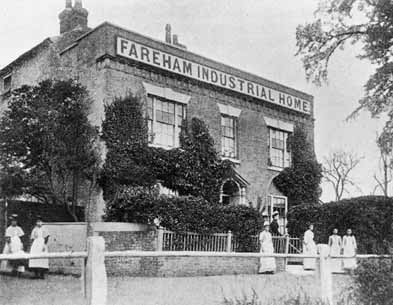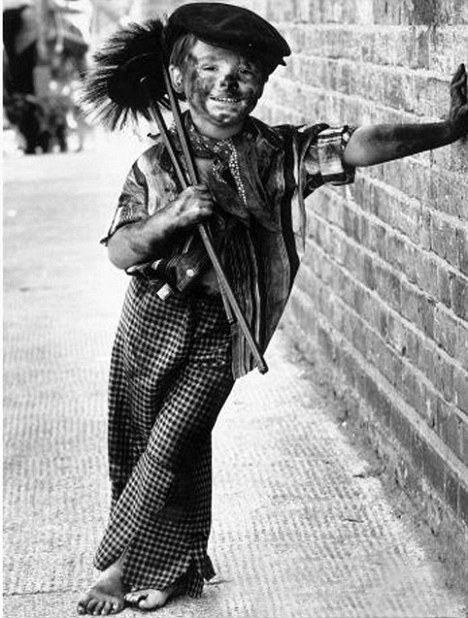What jobs did children do?
Children worked on farms, in homes as servants, and in factories. Children often did jobs that required small size and nimble fingers. But they also pushed heavy coal trucks along tunnels in coal mines. Boys went to sea, as boy-sailors, and girls went 'into service' as housemaids. Children worked on city streets, selling things such as flowers, matches and ribbons. Crossing boys swept the roads clean of horse-dung and rubbish left by the horses that pulled carts and carriages.What were Victorian factories like?
Britain was the first country in the world to have lots of factories. Factory machines made all kinds of things. Machines did jobs, such as spinning, previously been done by families at home.Factories were noisy. People had to shout above the rattle and hiss of machinery. They breathed air full of dust, oil and soot. Iron and steel works got so hot that workers dripped with sweat. Flames and sparks lit up the sky darkened by smoke from factory chimneys.Victorian England wasn't that 'hot' on rules of labour concerning children: typically, they were employed in the cotton mills to run beneath the moving machinery and collect waste
What were cotton mills?
Cotton mills were factories where cotton was spun into thread. In woollen mills, wool was spun in a similar way. Weaving machines turned the thread into textiles, such as cloth and carpets. In Victorian Britain, the cotton and wool industries employed thousands of workers, mostly in the north of England. Mill workers lived in small houses close to the factories.
Cotton is a natural material that comes from cotton plants which grow in hot countries like India. It is a soft, white fibre that that is used to make clothes because is: cheaper, more comfortable to wear and easier to wash than wool.
Originally, cotton fibres were twisted together with a wooden spinning wheel to form threads of yarn which were then woven together to make cloth using a device called a loom. Families often farmed land during the day and then made cloth at home in the evening. The women would do the spinning, whilst the men would do the weaving. It was called a 'cottageindustry' industry'.
Early cotton mills were built near to rivers and used large water wheels to power the machines inside them. In 1781, Sir Richard Arkwright opened the world's first steam-powered textile mill on Miller Street in Manchester. When Boulton and Watt developed a more efficient steam engine in 1783, the textile industry grew rapidly. Textiles like cloth and carpets could be produced quickly and sold across the world. Lancashire's damp climate made it perfect for keeping cotton yarns moist and unlikely to break so it became the centre of the industrial revolution in Britain. Lots of people moved away from the countryside to work in the mills. Manchester had 108 mills by 1853 and it became known as 'Cottonopolis'. The Bridgewater Canal, connecting Manchester with the port of Liverpool, was built to move large amounts of raw cotton and finished cloths around.
The mills were hot and dusty places so they were hard to breathe in. People had to shout above the rattle and hiss of machinery, which were deafeningly noisy. Women were employed to do the spinning and weaving and the men would oversee them to make sure they did not break the rules or fall asleep.
Small children called 'scavengers' were used for cleaning out machinery whilst they were running so it was very dangerous. Many lost fingers and some were killed.
Wages were low and people worked for up to 12 hours a day in the mills because their owners wanted to make as much money as possible.
Streets of small, cheap houses were built nearby. People walked to work early in the morning and walked back at night. Often, whole families shared a single room. They suffered from bad health because they could not afford: good food, warm clothes or medicines. |
Why was factory work dangerous?
Factory owners employed children because they were cheap, did not complain, had nimble fingers, and could crawl about under machines.Small girls worked in mills as 'piecers'. They mended broken threads. 'Scavengers' crawled beneath clattering machines to pick up scraps of cotton. They risked getting caught in the machinery, losing hair or arms. Yet most mill-owners thought factory work was easy. At first, there were no laws to protect working children.
Rich and poor families
In Victorian times, many families had 10 or more children. Sadly, many children died as babies, or from diseases such as smallpox and diphtheria. Child-death struck rich and poor families.In a Victorian town, it was easy to tell who was rich and who was poor. Children from richer homes were well fed, wore warm clothes and had shoes on their feet. They did not work, but went to school or had lessons at home.
Poor children looked thin and hungry, wore ragged clothes, and some had no shoes. Poor children had to work. They were lucky if they went to school.
Why did children go to work?
Many Victorian children were poor and worked to help their families. Few people thought this strange or cruel. Families got no money unless they worked, and most people thought work was good for children. The Industrial Revolution created new jobs, in factories and mines. Many of these jobs were at first done by children, because children were cheap - a child was paid less than adults (just a few pennies for a week's work).New laws to protect children
People called reformers, such as Lord Shaftesbury (1801-1885), argued in Parliament for laws to stop child-work. Inspectors, called Commissioners, went into factories and mines. They talked to working children to find out the facts. These are three of the new laws passed by Parliament.1841 Mines Act - No child under the age of 10 to work underground in a coal mine.
1847 Ten Hour Act - No child to work more than 10 hours in a day.
1874 Factory Act - No child under the age of 10 to be employed in a factory

 Who went to school?
Who went to school?
 There were lots of books written specially for children, such as Treasure Island (about pirates) by R L Stevenson and Black Beauty (about a horse) by Anna Sewell. Perhaps the most famous Victorian children's book is Alice's Adventures in Wonderland (1865) written by Lewis Carroll.
There were lots of books written specially for children, such as Treasure Island (about pirates) by R L Stevenson and Black Beauty (about a horse) by Anna Sewell. Perhaps the most famous Victorian children's book is Alice's Adventures in Wonderland (1865) written by Lewis Carroll.